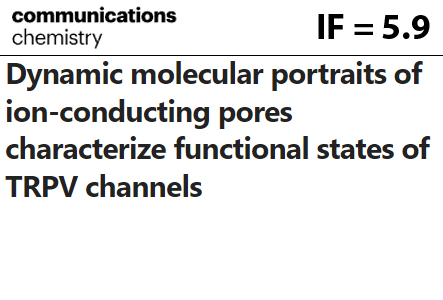
“Molecular portraits” characterized functional states of TRPV ion channels
TRPV ion channels realize a huge variety of functions in the human body participating in the temperature and pain sensation, cell division, calcium uptake. Researchers from IBCh RAS and Columbia University analyzed the structure of the key TRPV domain – the ion conducting pore. Using the original “dynamic molecular portrait” approach, they identified three major states of the pore that are common for all TRPVs, called α-closed, π-closed, and π-open. It was shown that the α-closed state is the most hydrophobic and always nonconducting. While the π-closed one is less stable and can easily transit to the open state, which has favorable hydrophobic properties for the ion conduction. The results were published in Communications Chemistry. Learn more
june 28, 2024

